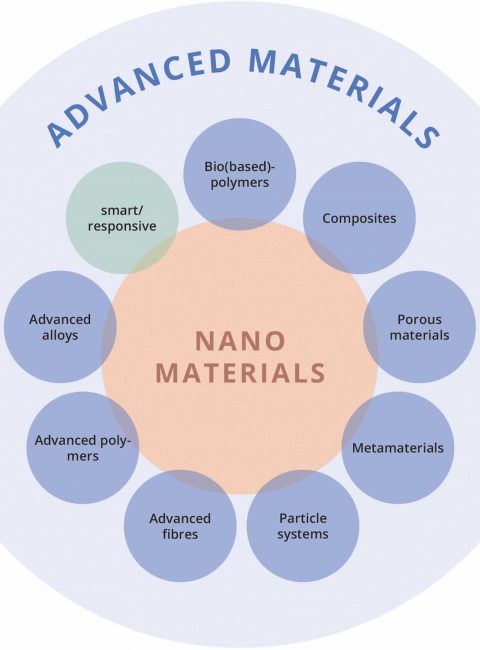 >
Spotlight June 2022: From small to clever – What does the future hold for the safety and sustainability of advanced materials?
>
Spotlight June 2022: From small to clever – What does the future hold for the safety and sustainability of advanced materials?
The smallest particles in materials research, nanoparticles, have occupied us intensively for more than 20 years to elucidate and further investigate their safety for humans and the environment. Now, however, the development is going from “small = nano” to “clever = advanced”, as discussed in a contribution by international scientists. Thereby, it is a great advantage to learn directly from the developments and achievements in the safety research of nanomaterials or to be able to transfer and apply them to advanced materials as well. In addition to the question “What is actually advanced or smart”, the demand for “Safe and sustainable by design (SSbD)” is also raised and the associated challenges are addressed. Important criteria for research here are the possibilities of characterizing the object of investigation, i.e. the concrete description of an advanced material, as well as the quality of the data generated and the data management. Again, the need for close collaboration between scientists from different disciplines with other stakeholders such as industry or regulatory authorities is pointed out. The authors make the important observation that nanosafety research to date has provided and will further provide the tools to meet this new challenge as well.
In doing so, they draw attention to three important prerequisites:
- The extension from “nano” to “advanced materials” should be based on technical criteria and include modelling as well as grouping approaches.
- Furthermore, sustainability should be integrated into the new material designs.
- And finally, these two principles should be firmly anchored in research, innovation and regulation to ensure a smooth transition to the implementation of the new and innovative materials.
Original publication:
Valsami-Jones, E et al. (2022). From small to clever: What does the future hold for the safety and sustainability of advanced materials? Nano Today, 42

Weitere Spotlights
Spotlight February 2021: Nanoobjects in the COVID-vaccine – scientifically correct?
The COVID-19 pandemic induces very different reactions of people on the internet (https://www.cdc.gov/mmwr/volumes/70/wr/mm7002e1.htm) and in the social networks. Without following the conspiracy theories as “5G nanochip hidden in COVID vaccines” some news as “COVID vaccines induce allergic reactions” should be scientifically recognised. The picture from the 5G-nanochip whose plan goes viral on the internet is […]
Read moreSpotlight May 2021: Towards safe and sustainable innovation in nanotechnology: State-of-play for smart nanomaterials
The European Commission’s new Action Plan for a Circular Economy Green Deal, the new European Industrial Strategy as well as the Chemicals Strategy for Sustainability presented in October 2020 are ambitious plans to achieve a sustainable, fair and inclusive economy in the European Union. These strategies require that any new material or product must not […]
Read moreSpotlight November 2021: Safe Materials from Scratch – Safe-by-Design in Materials Research
Advances in the field of materials science continue to amaze us with nanoscale materials with extraordinary chemical, electrical, optical, and numerous other properties. However, some nanoscale materials have different toxicological profiles compared to the same bulk material. Since safety issues are usually addressed just before launching a product into the market, safety issues may be […]
Read moreSpotlight June 2021: Endotoxin – the reason for false-positive toxicity testing for advanced materials?
Advanced materials, but also nanomaterials are closely examined to determine whether they trigger biological effects that could be harmful to humans and the environment before they are used in products. This also includes such materials as titanium dioxide, which has been used in a wide variety of products for more than 50 years. A particularly […]
Read more

